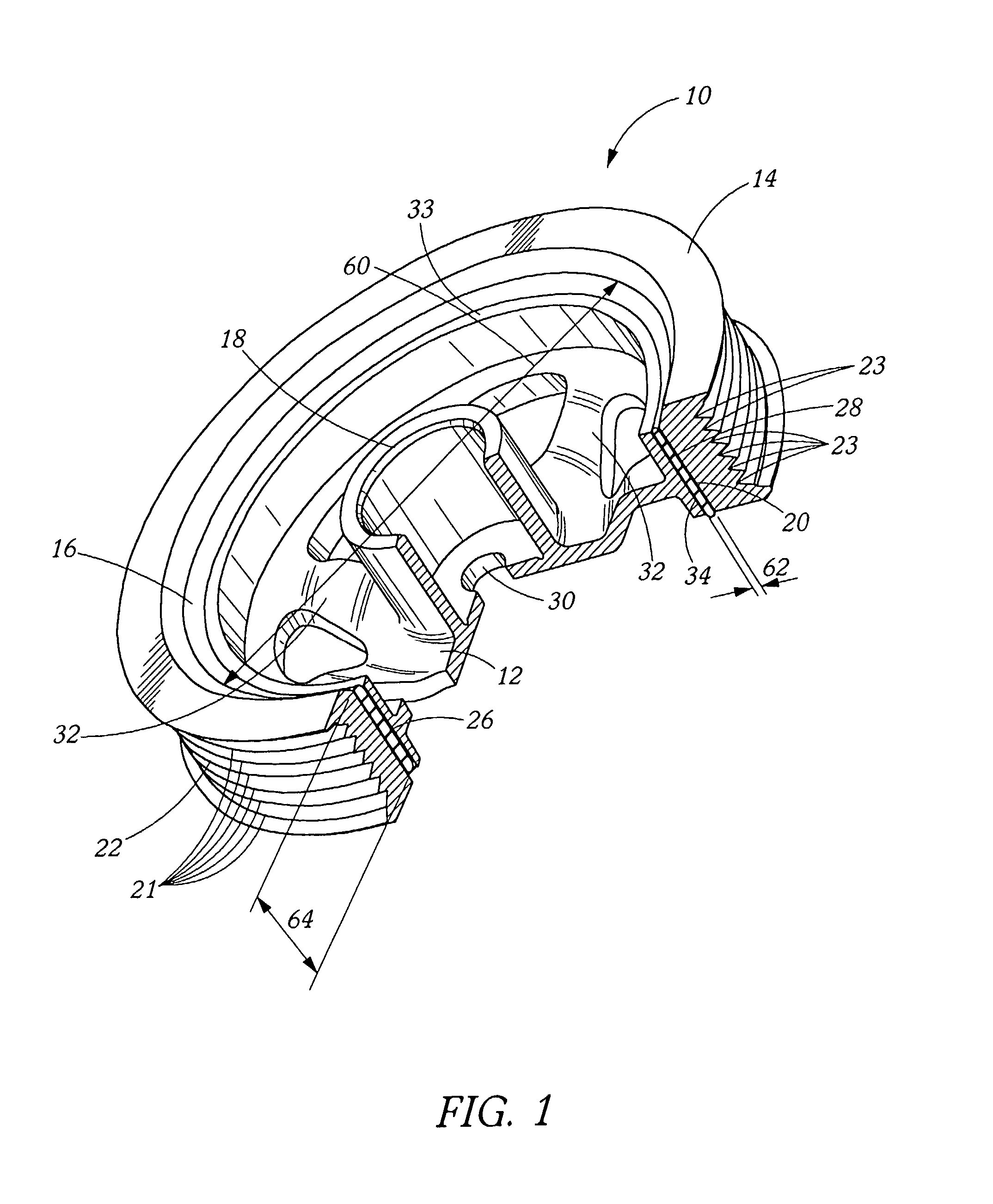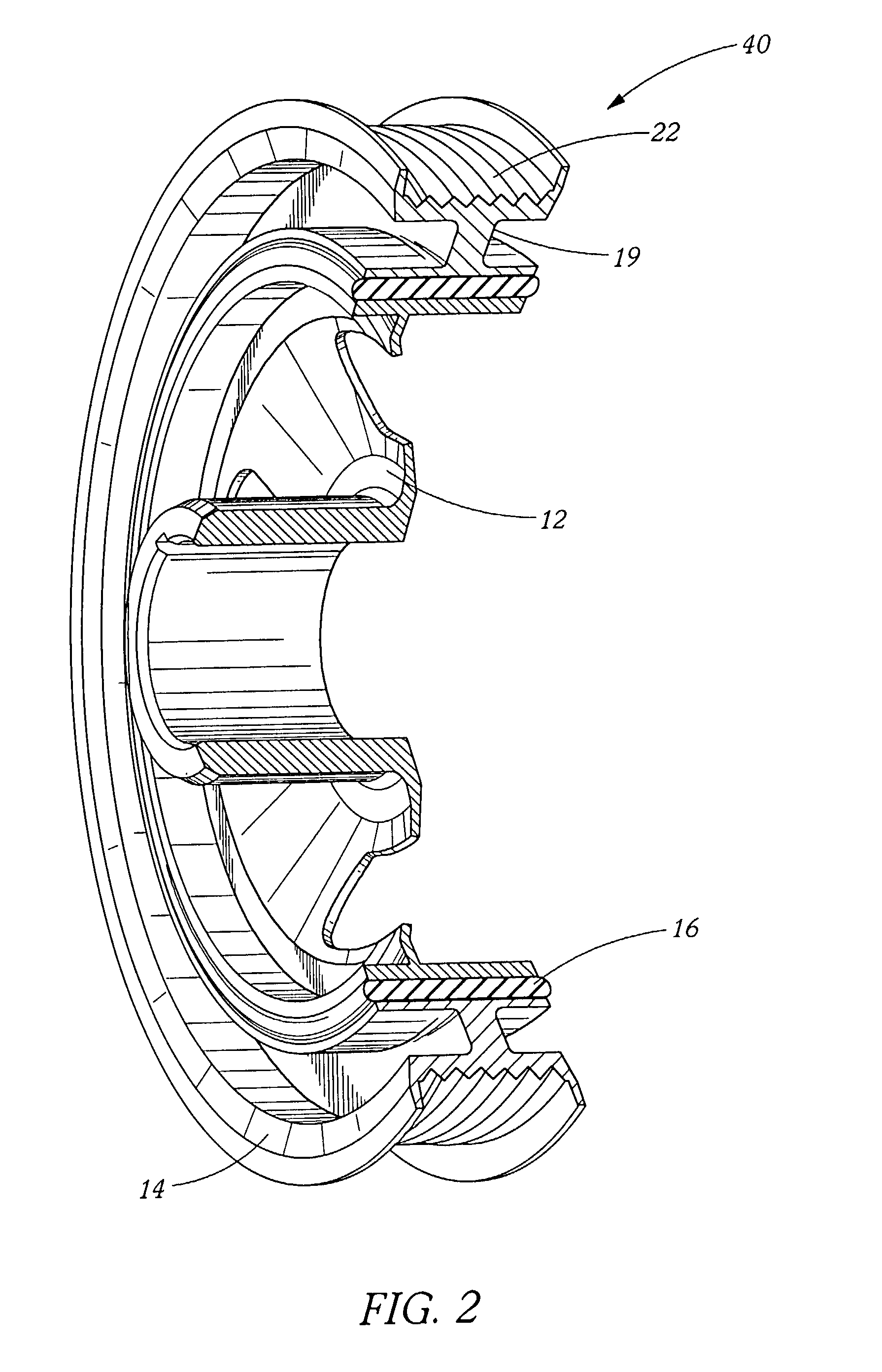Bonded part and method for producing same
a technology of mechanical bonding and parts, applied in the field of bonded parts, can solve the problems of limited level of mechanical bonding that can be achieved, reduce production flexibility, and reduce production efficiency,
- Summary
- Abstract
- Description
- Claims
- Application Information
AI Technical Summary
Benefits of technology
Problems solved by technology
Method used
Image
Examples
Embodiment Construction
[0020]Referring to FIG. 1, a crankshaft torsional vibration damper 10 constructed in accordance with an embodiment of the present invention is shown generally. The damper 10 comprises an annular metal hub 12 as shown, coaxially disposed within an inertia member, depicted in FIG. 1 as a metal pulley 14. An annular rubber member 16 comprising an outer surface 28 and an inner surface 34, an outside diameter 60, a thickness 62 and an axial width 64, is disposed, optionally under compression in the range of up to about 50% between the hub 12 and pulley 14, and provides damping and / or vibration isolation characteristics to the assembly as is well 20 known in the art. In the present context, the terms “inner” and “outer” are not used to describe specific, absolute locations, but rather are used to convey the general spatial relationship between the described parts.
[0021]The hub 12 comprises an outer surface 26 in adhering contact with the rubber member's inner surface 34, and furthermore i...
PUM
| Property | Measurement | Unit |
|---|---|---|
| temperature | aaaaa | aaaaa |
| temperature | aaaaa | aaaaa |
| inner volume | aaaaa | aaaaa |
Abstract
Description
Claims
Application Information
 Login to View More
Login to View More - R&D
- Intellectual Property
- Life Sciences
- Materials
- Tech Scout
- Unparalleled Data Quality
- Higher Quality Content
- 60% Fewer Hallucinations
Browse by: Latest US Patents, China's latest patents, Technical Efficacy Thesaurus, Application Domain, Technology Topic, Popular Technical Reports.
© 2025 PatSnap. All rights reserved.Legal|Privacy policy|Modern Slavery Act Transparency Statement|Sitemap|About US| Contact US: help@patsnap.com



